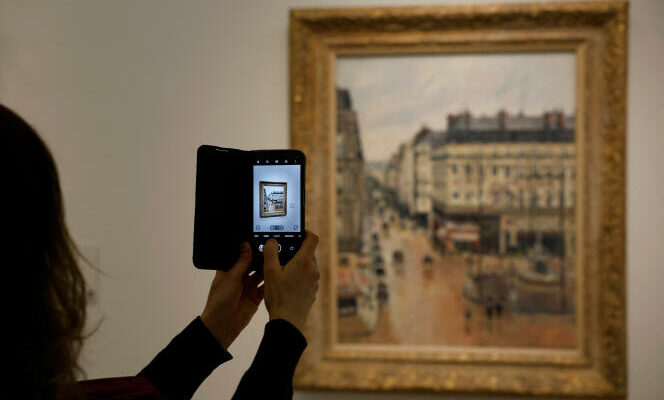LETTER FROM MADRID
Spain can keep Camille Pissarro painting Rue Saint-Honoré, afternoon. Rain effect which she has exhibited in her Madrid museum since 1992, although it comes from the pillaging of a Jewish family by the Nazis in 1939. After almost twenty years of legal battle, the Thyssen-Bornemisza Collection foundation won its case, the January 9, before the California Court of Appeal against the Cassirer family.
If California law would have allowed the family to return the property, it is “the Spanish law that must be applied to determine the ownership of the painting”, concluded the American court. Gold, “under article 155 of the Spanish Civil Code, the Thyssen-Bornemisza collection acquired ownership of the painting”, recalled the court. The article in question refers to usucapion or acquisitive prescription, that is to say the acquisition of property acquired in good faith through public possession and prolonged over time. The judicial chapter should close. The controversy, and the moral and ethical questions it raises, probably not.
The view of the Rue Saint-Honoré, afternoon. Rain effect is part of a series of around fifteen landscapes of Paris created by the French impressionist painter Camille Pissarro in 1897. Exhibited in an art gallery, it was acquired in 1900 by a German Jewish industrialist and art collector, Julius Cassirer. On the eve of the Second World War, the painting still hangs in the Berlin living room of his daughter-in-law, Lilly Cassirer. Fearing for her life, she was forced, in order to obtain a visa for the United Kingdom, to sell the work to a Nazi officer, for 360 dollars, paid into an account that was already blocked in any case.
From Berlin to Madrid, via Lugano and New York
Once the war ended, Lilly Cassirer, who had since settled in the United States, decided to find her painting and began legal proceedings in Germany in order to obtain its restitution. In 1958, the government of the German Federal Republic recognized her as the legal owner of the Pissarro and paid her compensation of 120,000 marks, without this sum implying that she renounced recovering the painting. Because the work has disappeared.
More than forty years passed before his grandson, Claude, found traces of it in the early 2000s thanks to a friend who saw it hanging on the walls of the Thyssen Museum in Madrid. In 1976, Baron Hans-Heinrich Thyssen-Bornemizsa bought it from the Stephen Hahn gallery in New York for $360,000. A sinister irony of history, this Swiss art collector is the heir to a steel industrial empire created in Germany in the 19the century by the Thyssen family, known for having contributed to financing the rise of Adolf Hitler, through his uncle, Fritz, affiliated with the Nazi party.
You have 55% of this article left to read. The rest is reserved for subscribers.
